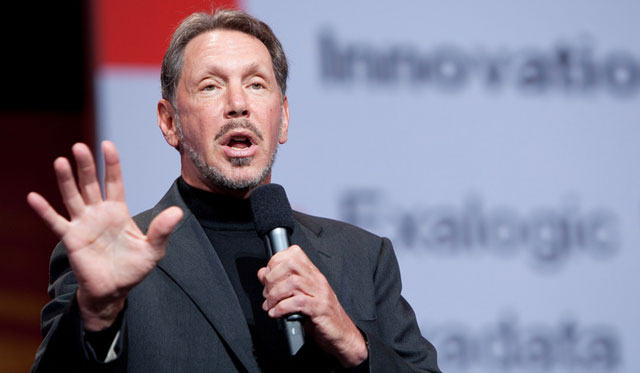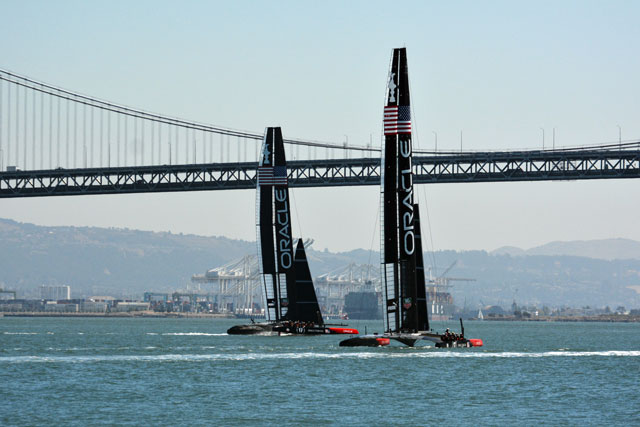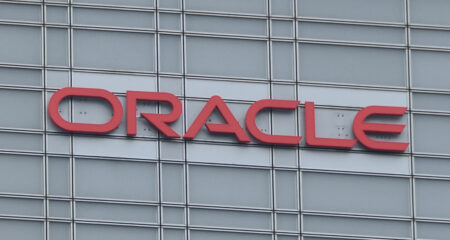
To defend sailing’s oldest trophy, billionaire Larry Ellison’s Oracle Team USA is enlisting help from European plane maker Airbus. The pairing isn’t as unlikely as it might seem.
The catamarans facing off this weekend at a preliminary round of the America’s Cup use hydrofoils to lift their hulls out of the water and fly along at more than 80km/h. Like Airbus’s A350 jetliners, they get their strength from lightweight carbon fibre and rely on hydraulic controls. And instead of using conventional fabric, they catch the wind in a rigid wing sail whose shape is borrowed from Airbus’s best-selling narrow-body jets.
“We’re moving towards aircraft,” said Ian “Fresh” Burns, performance director for Oracle Team USA. Airbus is “moving toward the future, and we’re moving with them.”
The yacht racer and the producer of jet aircraft unveiled details of their partnership on Saturday in Chicago, giving Airbus a chance to preen in the hometown of chief rival Boeing. It’s applying aviation know-how to vessels that are a far cry from the wooden boats that once vied for the “Auld Mug”, as the America’s Cup trophy is sometimes called.
“This for us is very good,” said Charles Champion, executive vice-president of engineering and president at subsidiary Airbus Operations SAS. Toulouse, France-based Airbus tries to encourage fresh-thinking and strives “to break the big-company mentality”.
Ellison’s team reaped its first victory in 2010 with more-traditional boats, which weighed about 23t, Burns told reporters at a briefing. The catamarans in this weekend’s regatta weigh about only a 10th as much, carry five-person crews and are four times as fast. (The boats are smaller cousins to the 72-footers used at the 2013 America’s Cup in San Francisco.)
Oracle Team USA has won the last two campaigns for the cup, which has been contested since 1851. Founded by Ellison, 71, the team is angling to become the first to win the cup three consecutive times. Technology has featured prominently in the event since 1983, when Australia II, featuring a radically designed winged keel, upset skipper Dennis Conner’s US team aboard Liberty.

Ellison’s group enlisted Airbus in 2014 to share expertise in aerodynamics, instrumentation, composites, structures, hydraulics and other areas honed over a half-century of jetliner design. The partnership is a first of its kind for Airbus, which assigned a team of about 30 aircraft engineers to work with the sailboat designers.
Airbus courted Oracle Team USA after its 2013 duel with New Zealand in San Francisco, the first time the America’s Cup was raced with the hull-out-of-the-water catamarans. The initial reaction was skeptical, according to Champion.
But that soon changed, with Airbus CEO Fabrice Bregier pitching in to help to make the case. The partnership has energised Airbus engineers while producing leaps in design and materials that may be used to improve the aerodynamics of the wingtips on the new A350 wide-body jet, Champion said in an interview.
The Oracle yacht is also outfitted with more than 300 sensors, connected to a server in the hull. Airbus flight-test engineers, no strangers to supercomputing, are helping analyse the huge amounts of data collected to quickly hone the design and improve performance. Airbus even created an “Iron Shark”, a landlocked version of the boat’s systems and controls, borrowing from the “Iron Bird” used to test jetliner systems during development.
Saturday’s event marked the first time that the Louis Vuitton America’s Cup World Series has been contested in fresh water. The six-team regatta on Lake Michigan is one of several races that will determine starting positions when cup qualifying begins on the Great Sound of Bermuda in June 2017. — © 2016 Bloomberg LP




